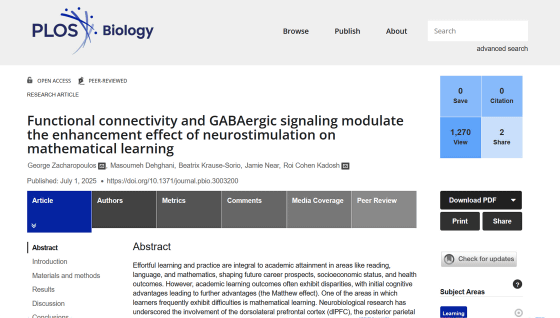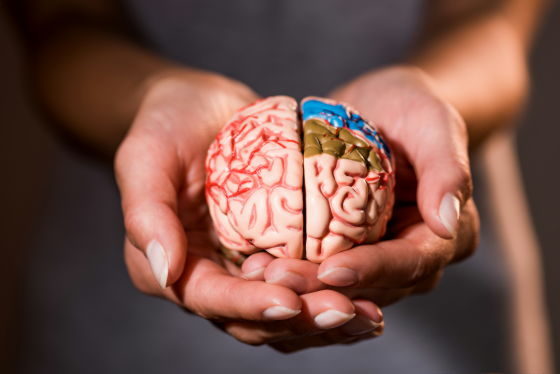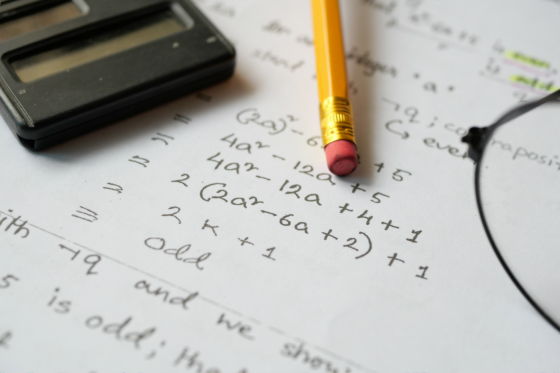Research shows that electrical brain stimulation improves math skills

Many people may have had difficulty solving arithmetic or math problems during their school days. Recently, a research team from Oxford University in the United States announced the results of a study that found that 'stimulating the brain electrically can improve students' math skills.'
Functional connectivity and GABAergic signaling modulate the enhancement effect of neurostimulation on mathematical learning | PLOS Biology

Could electric brain stimulation lead to better maths skills?
https://theconversation.com/could-electric-brain-stimulation-lead-to-better-maths-skills-260134
Scientists zapped students' brains with electricity to improve their math learning | Live Science
https://www.livescience.com/health/neuroscience/zapping-the-brain-may-help-boost-math-skills-study-hints
A certain level of mathematical skill is essential for everyday life and many professions, especially in science, technology, engineering and finance. However, a 2016 report by the Organization for Economic Cooperation and Development (OECD) found that 24-29% of adults in developed countries have only the same level of mathematical skill as the average 7-year-old.
'Lack of mathematical skills could lead to lower income, poorer health, a reduced ability to participate in politics, and less trust in others,' said Roy Cohen-Kadosh , a professor of cognitive neuroscience at the University of Surrey and co-author of the study. 'But there are large individual differences in academic achievement, and we know that biological factors such as genes and brain connectivity also play a major role.'

In their new study, Kadosh and his colleagues recruited 72 men and women aged 18 to 30 years old to participate in a five-day math learning session and a total of 150 minutes
Participants were randomly assigned to one of three groups: an experimental group receiving tRNS to the dorsolateral prefrontal cortex (dlPFC), an experimental group receiving tRNS to the posterior parietal cortex (PPC), or a control group receiving sham tRNS. The dorsolateral prefrontal cortex is an area important for memory, attention, and the acquisition of new cognitive skills, while the posterior parietal cortex is an area that processes mathematical information once learning is complete. Both are known to be activated during mathematics learning.
When the participants' brain connectivity and mathematical skill were measured at the start of the experiment, participants with higher baseline mathematical skill tended to have stronger connectivity between the dorsolateral prefrontal cortex and the posterior parietal cortex.

Over the course of the five-day trial, subjects with weaker connectivity between the dorsolateral prefrontal cortex and the posterior parietal cortex who received sham tRNS and those who received tRNS to the posterior parietal cortex had a harder time understanding arithmetic problems than subjects with stronger connectivity.
On the other hand, even in subjects with weak connectivity between the dorsolateral prefrontal cortex and the posterior parietal cortex, the group that received tRNS to the dorsolateral prefrontal cortex showed a significant improvement in mathematical skills. Kadosh points out that the reason for this may be that tRNS gently boosts the activity of neurons that are performing poorly, improving learning ability.
'Electrical brain stimulation helped these children close the gap between themselves and their peers who have stronger innate neural connections,' said Kadosh. 'This finding indicates that the prefrontal cortex plays a key role in learning and may help reduce educational gaps based on neurobiology.'
Related Posts:
in Science, Posted by log1h_ik







